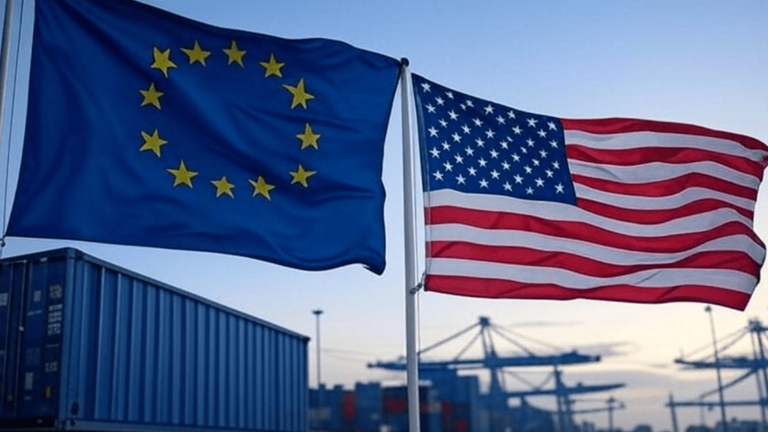
Wafricnews - June 16, 2025
The European Union may soon agree to a 10% flat tariff on its exports to the United States in a high-stakes bid to calm an escalating trade standoff with Washington. The proposal, which covers critical sectors such as automobiles, pharmaceuticals, and consumer electronics, is part of a broader negotiation effort aimed at preventing a looming tariff onslaught from the U.S., spearheaded by former President Donald Trump.
Sources close to the matter say that if talks stall, EU exporters could soon face crippling U.S. duties of up to 50%—a scenario that would have ripple effects across transatlantic trade and Europe’s industrial backbone. But if an agreement is reached, the 10% tariff could serve as a compromise deal designed to diffuse tensions without completely dismantling the current trade framework.
A Strategic Trade Pivot to Prevent Economic Turbulence
EU officials say they are playing defense. Accepting a 10% blanket tariff, while not ideal, is viewed as the lesser of two economic evils. Brussels hopes this move will help it avoid a deeper trade crisis while protecting its key industries from unpredictable shocks.
“The aim is to stabilize our economic partnership and prevent an all-out tariff war,” said a senior EU diplomat involved in the discussions. “We’re trying to keep the rules-based order intact, even if it means accepting short-term sacrifices.”
The tariff negotiation comes amid growing pressure from American trade representatives, who claim European countries have long benefited from preferential treatment. Trump, during his recent campaign speeches, has been outspoken about what he perceives as imbalanced trade deals and vowed to hike tariffs on foreign products if reelected.
Countdown to July 9: A Deadline with Global Implications
According to reports, both sides are under a tight deadline. If no resolution is reached by July 9, the U.S. could enact the threatened 50% tariffs—a move that would drastically increase prices for European cars, medical supplies, and tech goods in the U.S. market.
European automakers, in particular, are watching the negotiations with anxiety. Companies like Volkswagen, BMW, and Peugeot rely heavily on the American consumer market, and the possibility of 50% duties could cost the industry billions in lost revenue.
The pharmaceutical sector is also on edge. Many U.S. hospitals and pharmacies rely on high-quality drug imports from European manufacturers. With life-saving medications in play, both sides are treading carefully to avoid disrupting sensitive supply chains.
Global Reactions and Economic Forecasts
Economists suggest that if the 10% tariff plan is enacted, it could act as a stabilizer—not just for EU-U.S. trade, but for global markets that have grown jittery in recent weeks. Investors have been closely monitoring the developments, and any sign of progress could restore confidence.
However, critics argue that even a 10% tariff could make EU goods less competitive in the U.S. and put pressure on manufacturers to absorb or pass on added costs.
“The EU is essentially buying peace, but it comes at a cost,” said Dr. Amaka Odili, a trade economist at the University of Lagos. “This deal, if finalized, shows just how much leverage the U.S. still has on the global trade table.”
Meanwhile, China and other major economies are keeping close tabs on the outcome. A successful deal between the EU and the U.S. could set a precedent for how future trade tensions are negotiated in a shifting multipolar world.
What Comes Next?
Negotiations are expected to intensify in the coming days, with top EU trade officials scheduled to meet their U.S. counterparts for further rounds of dialogue. Both parties have remained tight-lipped about specifics but have expressed cautious optimism.
For now, the business world holds its breath, watching closely to see if diplomacy can win the day before July 9.
By WafricNews Desk.
By WafricNews Desk.


Comment
To post a comment, you have to login first
LoginNo Comments Yet...